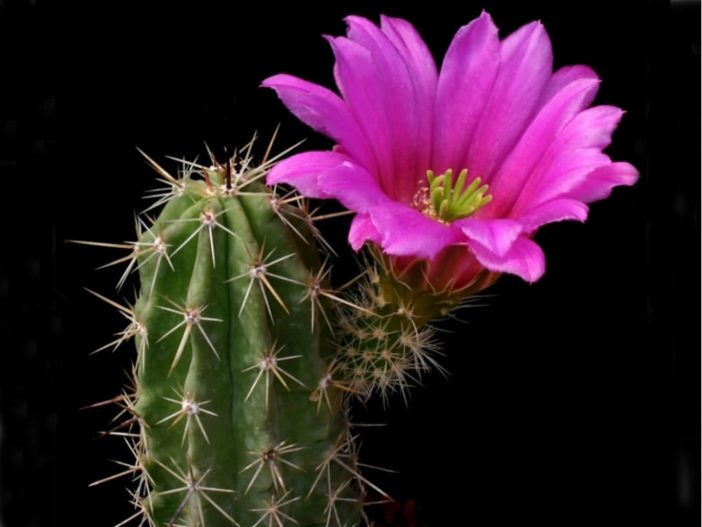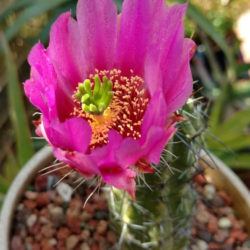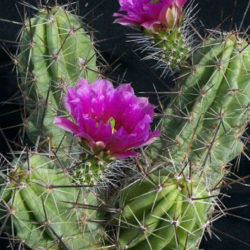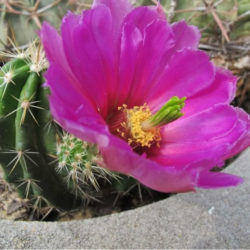Scientific Name
Echinocereus enneacanthus subsp. brevispinus (W.O.Moore) N.P.Taylor
Common Name(s)
Alicoche Banana Cactus, Banana Cactus, Cob Cactus, Green Strawberry, Green Strawberry Hedgehog, Pitaya, Prostrate Hedgehog, Prostrate Hedgehog Cactus, Purple Pitaya, Smallspine Pitaya, Strawberry Cactus, Strawberry Hedgehog Cactus
Synonym(s)
Echinocereus enneacanthus f. brevispinus, Echinocereus enneacanthus var. brevispinus
Scientific Classification
Family: Cactaceae
Subfamily: Cactoideae
Tribe: Pachycereeae
Genus: Echinocereus
Description
Echinocereus enneacanthus subsp. brevispinus is a clump-forming cactus with green, cylindrical stems with usually 6 to 10 ribs lined with clusters of long spines. It has narrower stems, more closely set areoles on the ribs, and shorter spines than Echinocereus enneacanthus var. enneacanthus. The stems are decumbent or erect and can grow up to 3.3 feet (1 m) long and 2 inches (5 cm) in diameter, but they are usually much shorter.
The funnel-shaped flowers are pink or magenta and appear in early spring, opening during mid-morning.
Origin
Echinocereus enneacanthus subsp. brevispinus is native to northeastern Mexico and the United States (New Mexico and Texas).

Hardiness
USDA hardiness zones 9a to 11b: from 20 °F (−6.7 °C) to 50 °F (+10 °C).
How to Grow and Care
If you can grow other globular cactus successfully, you can most likely grow Echinocereus well. One of the key factors in success with these is avoiding any hint of wet soil. Because their root systems are weak, they are especially prone to root rot, eventually killing your plant. Otherwise, they thrive on a program of intense, bright light, slight water, and a steady diet of light fertilizer. These cacti are vulnerable to mealybugs and aphids.
Echinocereus are slow-growing cacti that should only need repotting every other year or so. You can prolong the time to repotting by removing plantlets and potting them up in their own pots. When repotting a cactus, remove it from its pot and remove any clumped soil. These plants tend to be shallow-rooted with weak root systems, so take care not to damage their roots.
See more at How to Grow and Care for Echinocereus.
Links
- Back to genus Echinocereus
- Succupedia: Browse succulents by Scientific Name, Common Name, Genus, Family, USDA Hardiness Zone, Origin, or cacti by Genus
Photo Gallery
Click on a photo to see a larger version.


